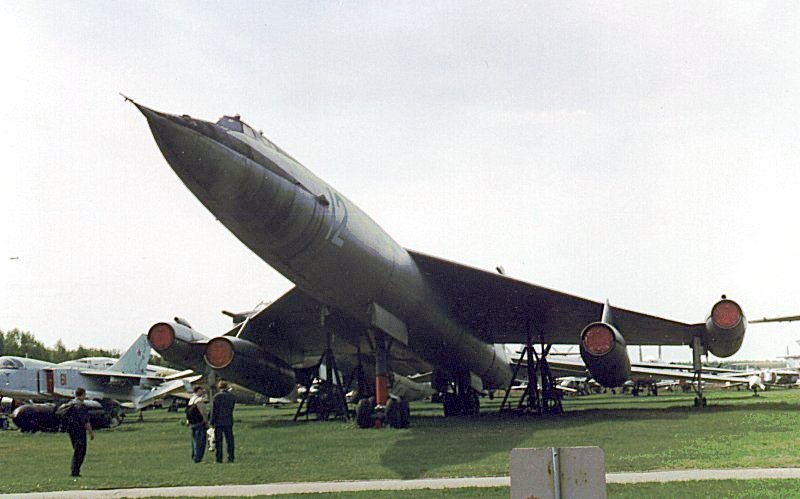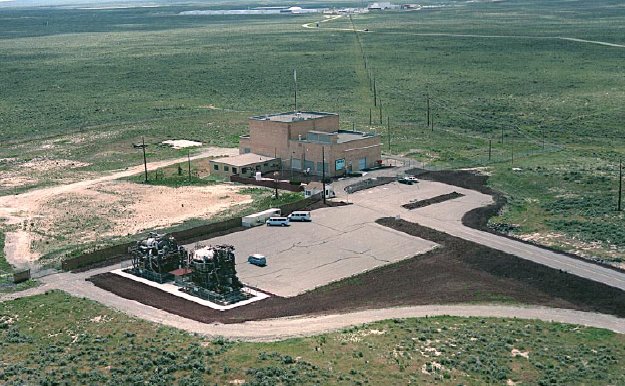|
Myasishchev M-60
The Myasishchev M-60 was a Soviet design for a nuclear-powered bomber. The design was similar to the M-50 bomber prototype. Myasishchev received the instruction to start the development of the M-60 on 19 May 1955. However, it did not make it out of the planning stage, and the M-60 program was cancelled in 1959. It appears that the M-60 designation has been used for a number of projects at Myasishchev V. M. Myasishchev Experimental Design Bureau (Экспериментальный Машиностроительный Завод им. В. М. Мясищева) or OKB-23, founded in 1951 by MGB UdSSR Vladimir Myasishchev, was ..., including a recent transport and civil aircraft. Specifications (M-60) Se ...
|
Nuclear Aircraft
A nuclear-powered aircraft is a concept for an aircraft intended to be powered by nuclear energy. The intention was to produce a jet engine that would heat compressed air with heat from fission, instead of heat from burning fuel. During the Cold War, the United States and Soviet Union researched nuclear-powered bomber aircraft, the greater endurance of which could enhance nuclear deterrence, but neither country created any such operational aircraft. One inadequately solved design problem was the need for heavy shielding to protect the crew and those on the ground from radiation; other potential problems included dealing with crashes. Some missile designs included nuclear-powered hypersonic cruise missiles. However, the advent of ICBMs and nuclear submarines in the 1960s greatly diminished the strategic advantage of such aircraft, and respective projects were canceled. U.S. programs NEPA and ANP In May 1946, the United States Army Air Forces started the Nuclear Energy f ... [...More Info...] [...Related Items...] OR: [Wikipedia] [Google] [Baidu] |
Myasishchev M-50
The Myasishchev M-50 (russian: Мясищев М-50; NATO reporting name Bounder) is a Soviet prototype four-jet engine supersonic strategic bomber which never attained service. Only one flightworthy prototype was built, which was first flown in October 1959. The M-50 was constructed by the Myasishchev design bureau. Design and development The M-50 was a fast jet bomber with four engines: two Dobrynin VD-7 non-afterburning turbojet engines at the outer and two VD-7F afterburning turbojet engines at the inner positions. The two inner engines were located under the wing, and the two outer on the wingtips of its shoulder-mounted, truncated delta wings. The second aircraft was designated M-52 and carried Zubets 16-17 turbofans, around which the aircraft had been designed. The engine installation was modified, and a second tailplane added to the top of the fin. The fore-end of the M-52 has been redesigned: in place of the tandem cockpit of the M-50 with seats in a row, the M-5 ... [...More Info...] [...Related Items...] OR: [Wikipedia] [Google] [Baidu] |
Myasishchev
V. M. Myasishchev Experimental Design Bureau (Экспериментальный Машиностроительный Завод им. В. М. Мясищева) or OKB-23, founded in 1951 by MGB UdSSR Vladimir Myasishchev, was one of the chief Soviet aerospace design bureaus until its dissolution in 1960. Vladimir Myasishchev went on to head TsAGI. In 1967, Myasishchev left TsAGI and recreated his bureau, which still exists to this day. The bureau prefix was "M." , its workforce is estimated at approximately one thousand. Myasishchev and NPO Molniya intend to use the V-MT or M-55 as launch vehicle for sub-orbital spaceflight. In July 2014, the merger of Myasishchev and Ilyushin to create a single modern production complex was announced by the Board of Directors of OAO Il. Products 1940-1960 * VM-1/DVB-102: prototype long-range, high-altitude bomber, 1940 **VM-2: projected version of VM-1 with M-20 diesel engines, 1940 **VM-3/DVB-102N: projected version ... [...More Info...] [...Related Items...] OR: [Wikipedia] [Google] [Baidu] |
Convair X-6
The Convair X-6 was a proposed experimental aircraft project to develop and evaluate a nuclear-powered jet aircraft. The project was to use a Convair B-36 bomber as a testbed aircraft, and though one NB-36H was modified during the early stages of the project, the program was canceled before the actual X-6 and its nuclear reactor engines were completed. The X-6 was part of a larger series of programs, costing US$7 billion in all, that ran from 1946 through 1961. Because such an aircraft's range would not have been limited by liquid jet fuel, it was theorized that nuclear-powered strategic bombers would be able to stay airborne for weeks at a time. Development and design In May 1946, the Nuclear Energy for the Propulsion of Aircraft (NEPA) project was started by the Air Force. Studies under this program were done until May 1951 when NEPA was replaced by the Aircraft Nuclear Propulsion (ANP) program. The ANP program included plans for Convair to modify two B-36s under the MX- ... [...More Info...] [...Related Items...] OR: [Wikipedia] [Google] [Baidu] |
Convair NB-36H
The Convair NB-36H was an experimental aircraft that carried a nuclear reactor. It was nicknamed "The Crusader". It was created for the Aircraft Nuclear Propulsion program, or the ANP, to show the feasibility of a nuclear-powered bomber. Its development ended with the cancellation of the ANP program. Design and development The Aircraft Nuclear Propulsion (ANP) program, and the preceding Nuclear Energy for the Propulsion of Aircraft (NEPA) project, worked to develop a nuclear propulsion system for aircraft. The United States Army Air Forces initiated Project NEPA on May 28, 1946. After funding of $10 million in 1947, NEPA operated until May 1951, when the project was transferred to the joint Atomic Energy Commission (AEC)/USAF ANP. The USAF pursued two different systems for nuclear-powered jet engines, the Direct Air Cycle concept, which was developed by General Electric, and Indirect Air Cycle, which was assigned to Pratt & Whitney. The program was intended to develop and tes ... [...More Info...] [...Related Items...] OR: [Wikipedia] [Google] [Baidu] |
Tupolev Tu-119
The Tupolev Tu-95LAL (russian: Летающая Атомная Лаборатория, translit=Letayushchaya Atomnaya Laboratoriya, lit=flying atomic laboratory) was an experimental aircraft that was a modified Tupolev Tu-95 Soviet bomber aircraft, which flew from 1961 to 1965, analogous to the United States' earlier Convair NB-36H. It was intended to see whether a nuclear reactor could be used to power an aircraft, primarily testing airborne operation of a reactor and shielding for components and crew. Design and development During the Cold War the USSR had an experimental nuclear aircraft program. Without the need to refuel, a nuclear-powered aircraft would have greatly extended range compared to conventional designs. On 12 August 1955 the Council of Ministers of the USSR issued a directive ordering bomber-related design bureaus to join forces in researching nuclear aircraft. The design bureaus of Andrei Tupolev and Vladimir Myasishchev became the chief design teams, whi ... [...More Info...] [...Related Items...] OR: [Wikipedia] [Google] [Baidu] |
1950s Soviet Bomber Aircraft
Year 195 ( CXCV) was a common year starting on Wednesday (link will display the full calendar) of the Julian calendar. At the time, it was known as the Year of the Consulship of Scrapula and Clemens (or, less frequently, year 948 ''Ab urbe condita''). The denomination 195 for this year has been used since the early medieval period, when the Anno Domini calendar era became the prevalent method in Europe for naming years. Events By place Roman Empire * Emperor Septimius Severus has the Roman Senate deify the previous emperor Commodus, in an attempt to gain favor with the family of Marcus Aurelius. * King Vologases V and other eastern princes support the claims of Pescennius Niger. The Roman province of Mesopotamia rises in revolt with Parthian support. Severus marches to Mesopotamia to battle the Parthians. * The Roman province of Syria is divided and the role of Antioch is diminished. The Romans annexed the Syrian cities of Edessa and Nisibis. Severus re-establish his he ... [...More Info...] [...Related Items...] OR: [Wikipedia] [Google] [Baidu] |




